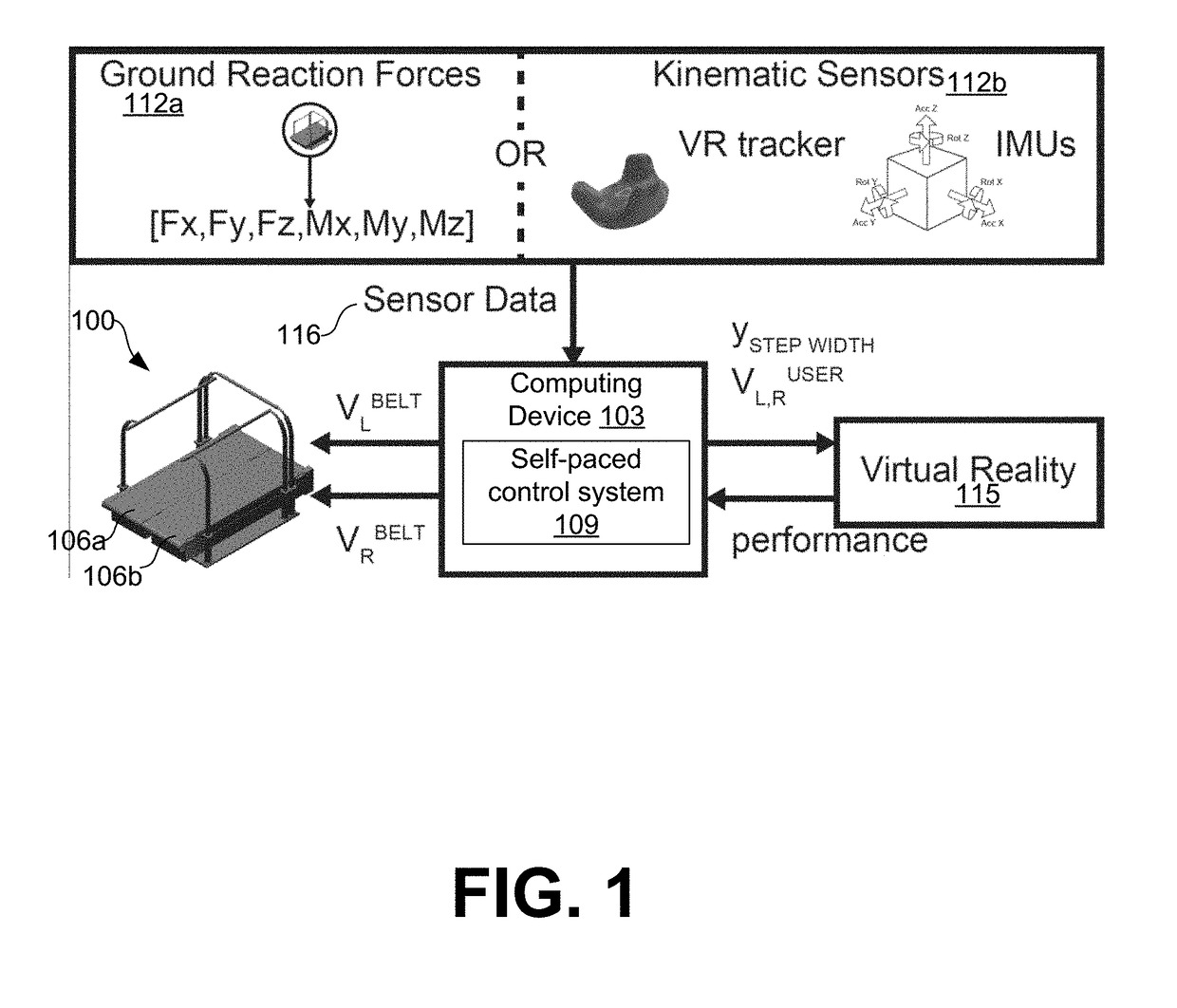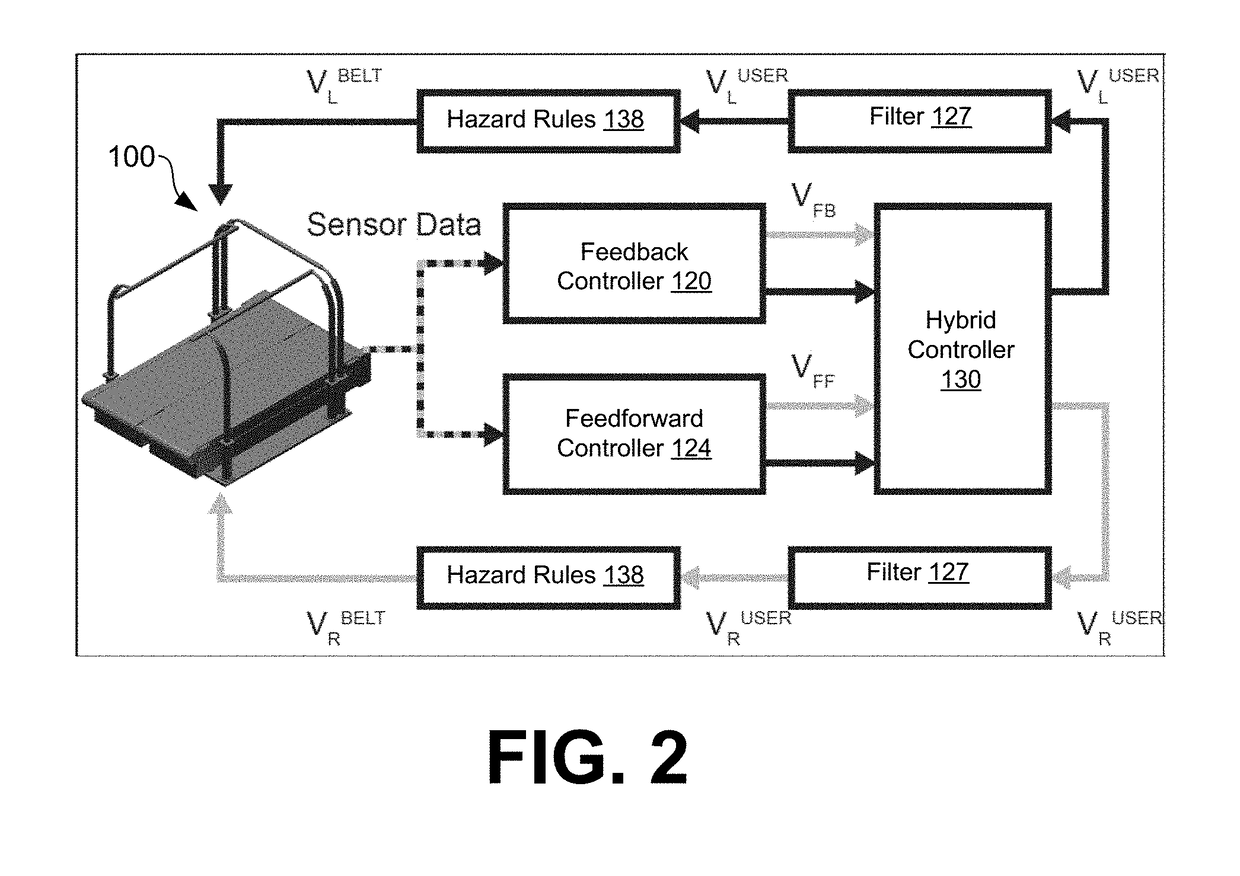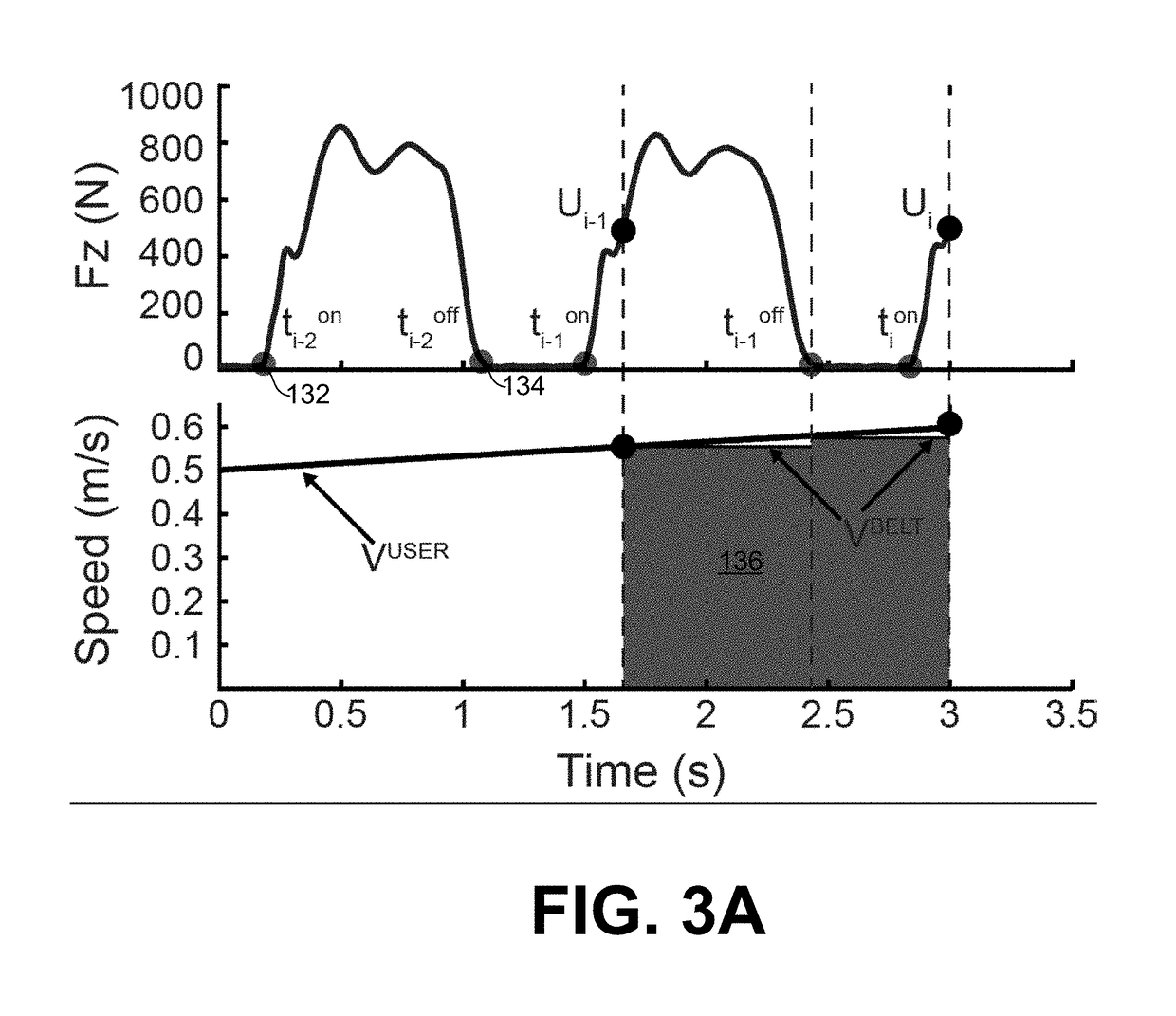Systems and methods for controlling a self-paced treadmill using predicted subject velocity
a technology of subject velocity and self-paced treadmill, which is applied in the direction of gymnastic exercise, sport apparatus, cardiovascular exercise devices, etc., can solve the problems of walking asymmetry, after-effects that persis
- Summary
- Abstract
- Description
- Claims
- Application Information
AI Technical Summary
Benefits of technology
Problems solved by technology
Method used
Image
Examples
Embodiment Construction
[0018]The present disclosure provides various embodiments of systems and methods of a self-paced treadmill where the speed of each treadmill belt is based at least in part on the speed of the subject's leg. According to various embodiments, the self-based treadmill can comprise a split-belt treadmill (e.g., Bertece, Woodwaye treadmills) that is configured to self-pace by measuring leg motion. The leg motion can be measured with ground reaction forces (GRF) obtained via GRF sensors in the treadmill without the use of any additional subject instrumentation, with wearable kinematic sensors (e.g., virtual tracker, inertial measurement unit (IMU), etc.) tracking leg position, and / or any with any other type of sensor that can measure leg motion as can be appreciated. The sensor data acquired from the sensor(s) can be used to compute spatiotemporal leg progression relative to the treadmill via two simultaneous processes. The first, called a feedback process (FB), calculates current step sp...
PUM
 Login to View More
Login to View More Abstract
Description
Claims
Application Information
 Login to View More
Login to View More - R&D
- Intellectual Property
- Life Sciences
- Materials
- Tech Scout
- Unparalleled Data Quality
- Higher Quality Content
- 60% Fewer Hallucinations
Browse by: Latest US Patents, China's latest patents, Technical Efficacy Thesaurus, Application Domain, Technology Topic, Popular Technical Reports.
© 2025 PatSnap. All rights reserved.Legal|Privacy policy|Modern Slavery Act Transparency Statement|Sitemap|About US| Contact US: help@patsnap.com



